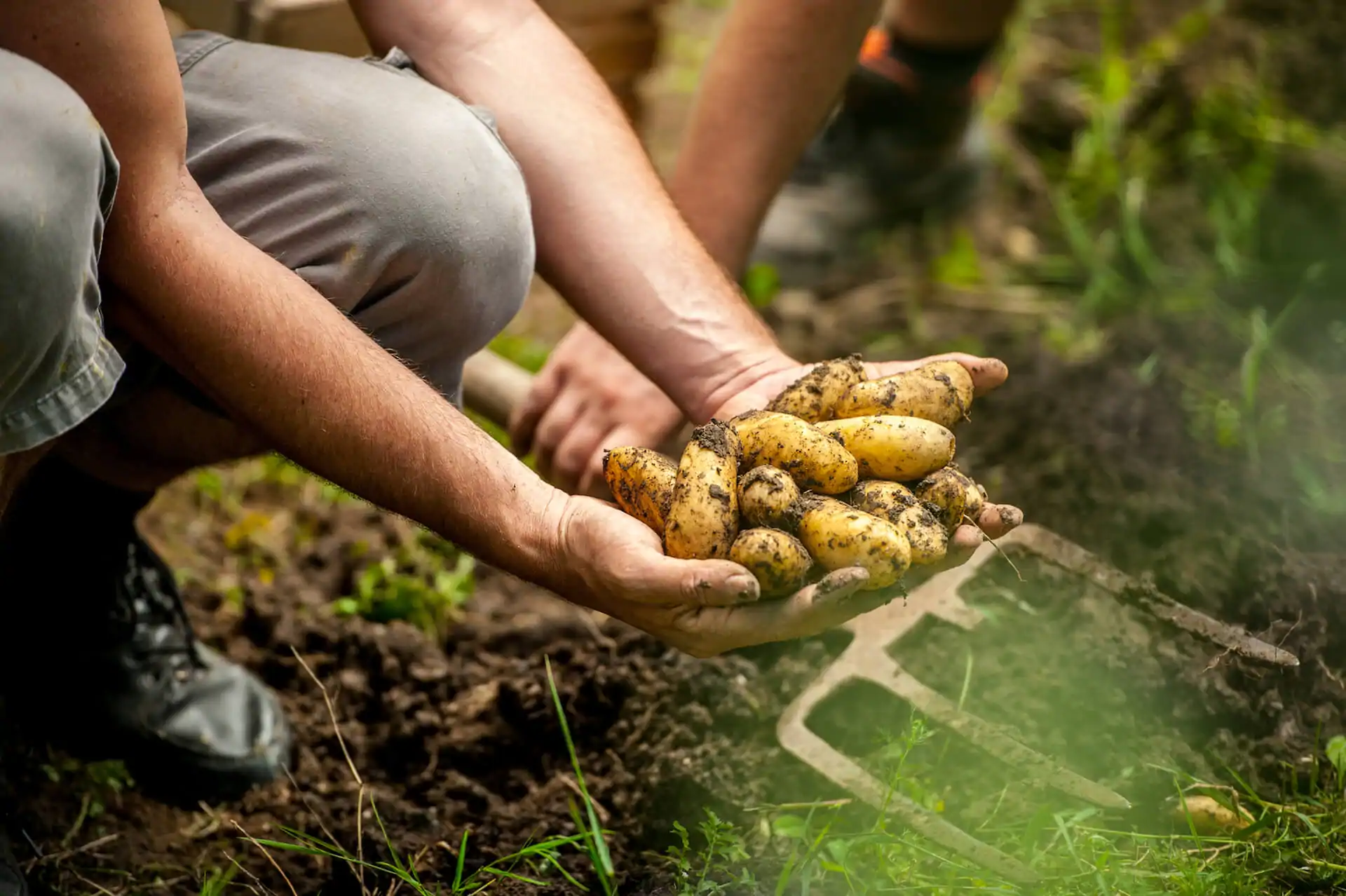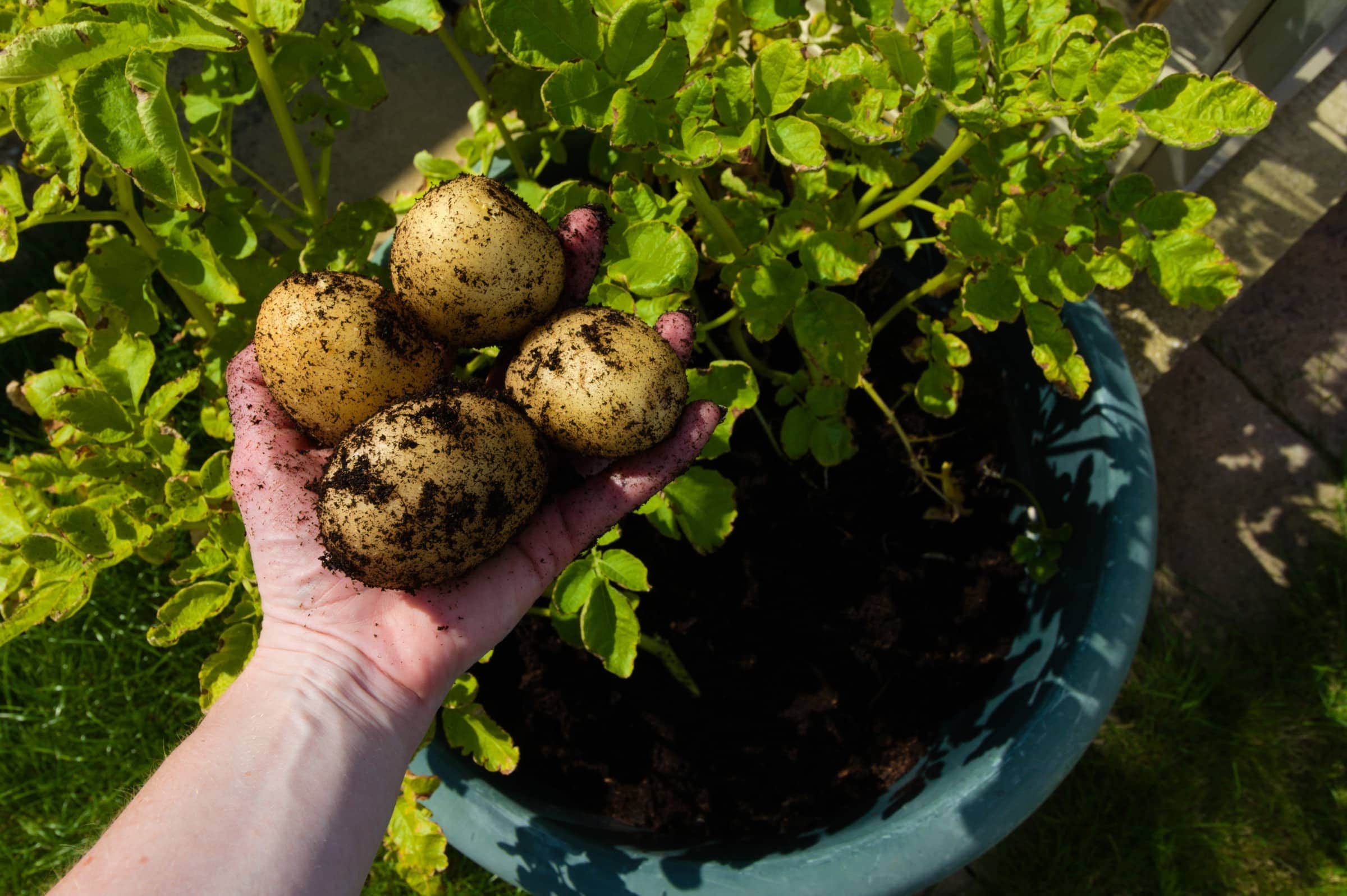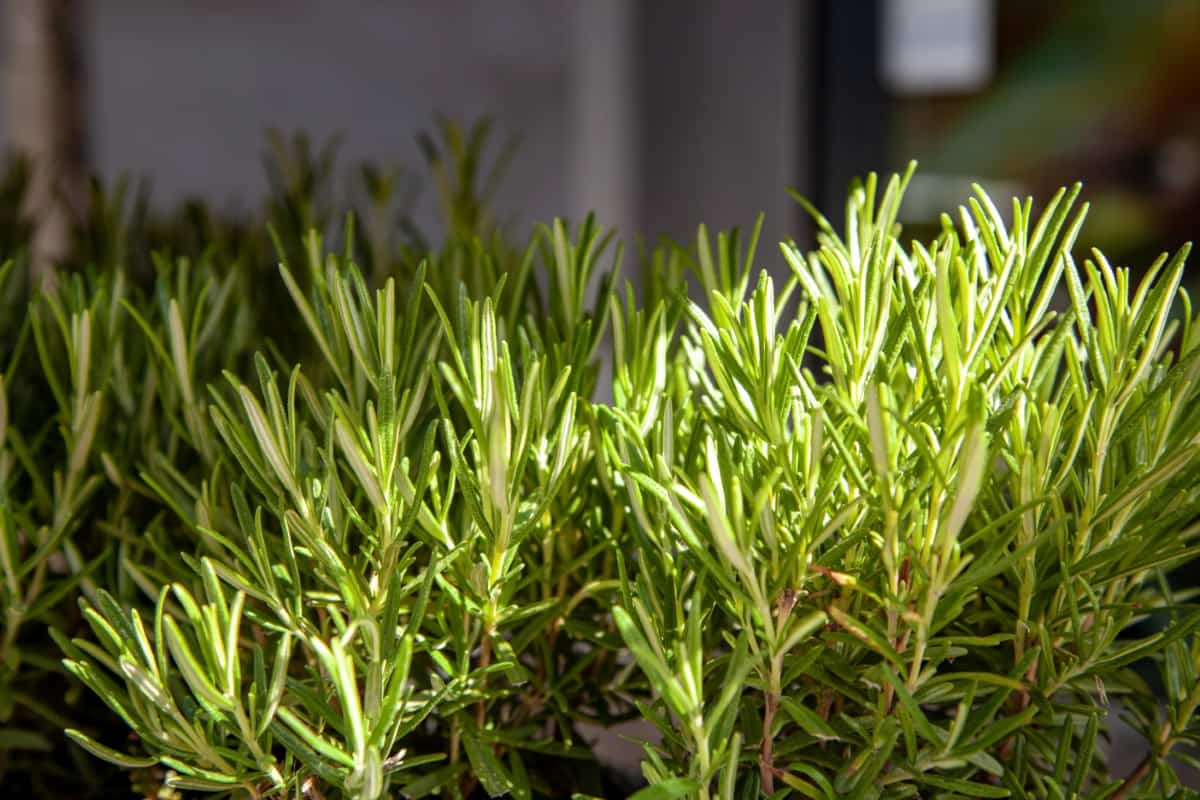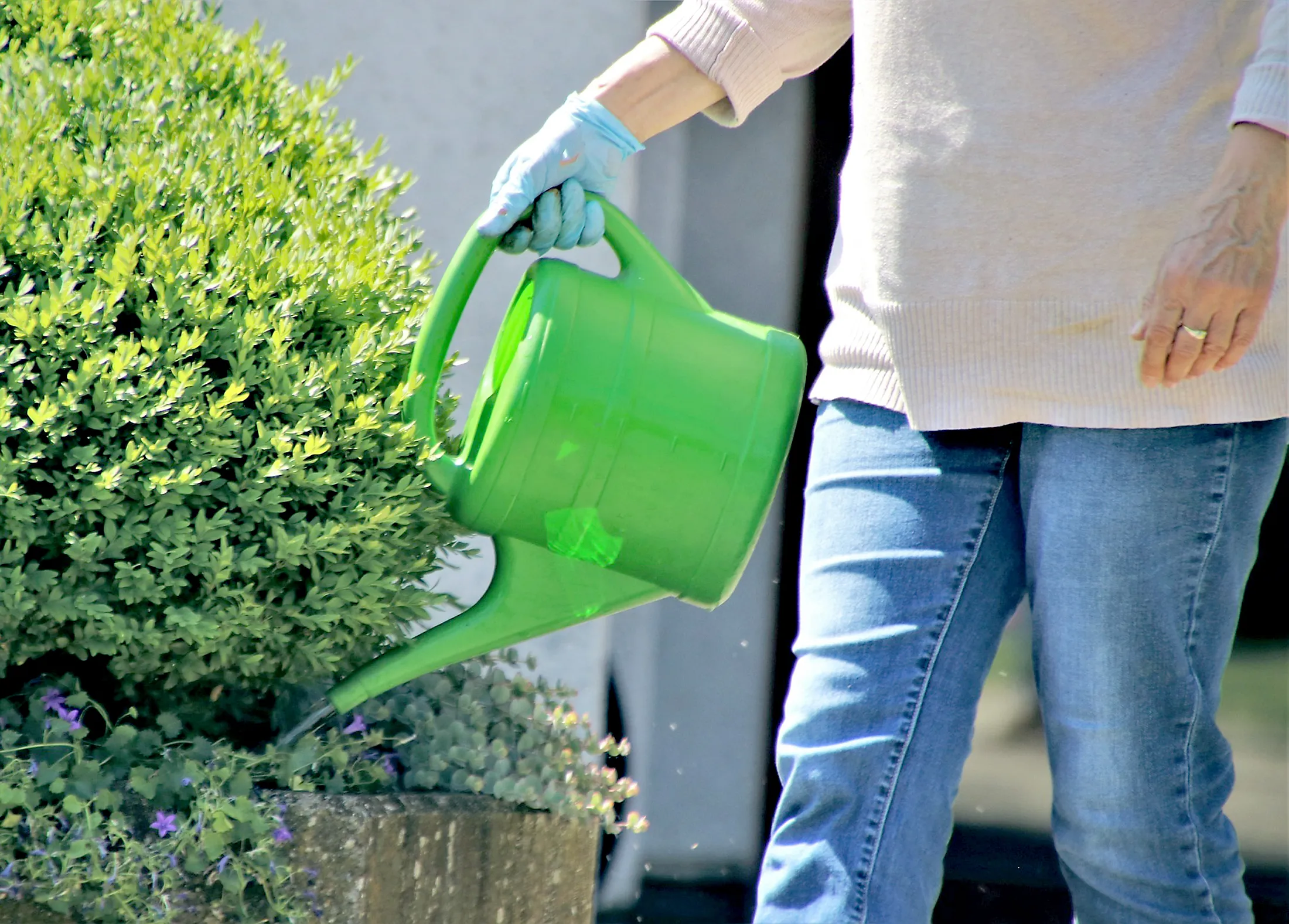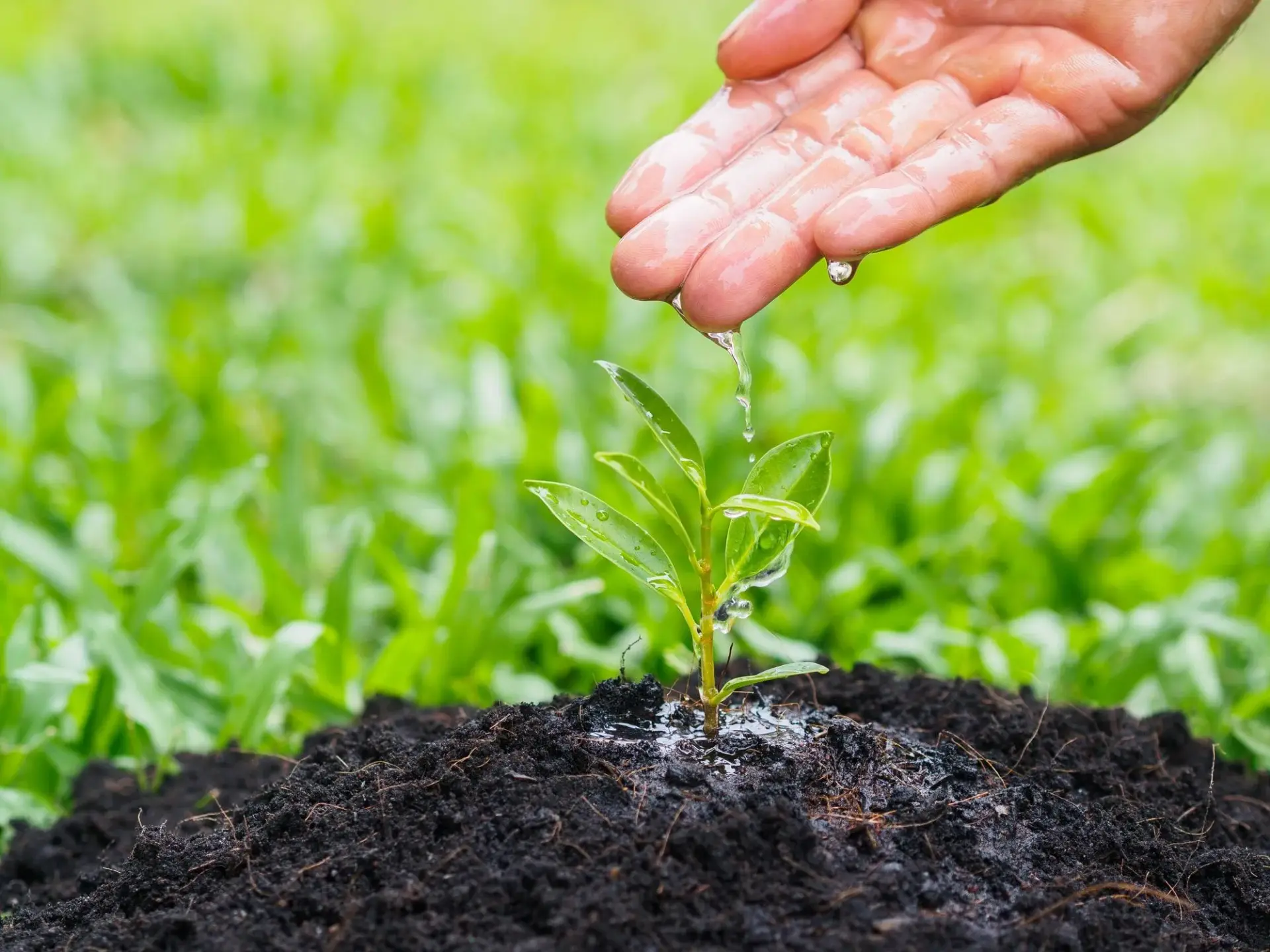Home>Types of Gardening>Ornamental Gardening>When To Harvest Herbs After Planting
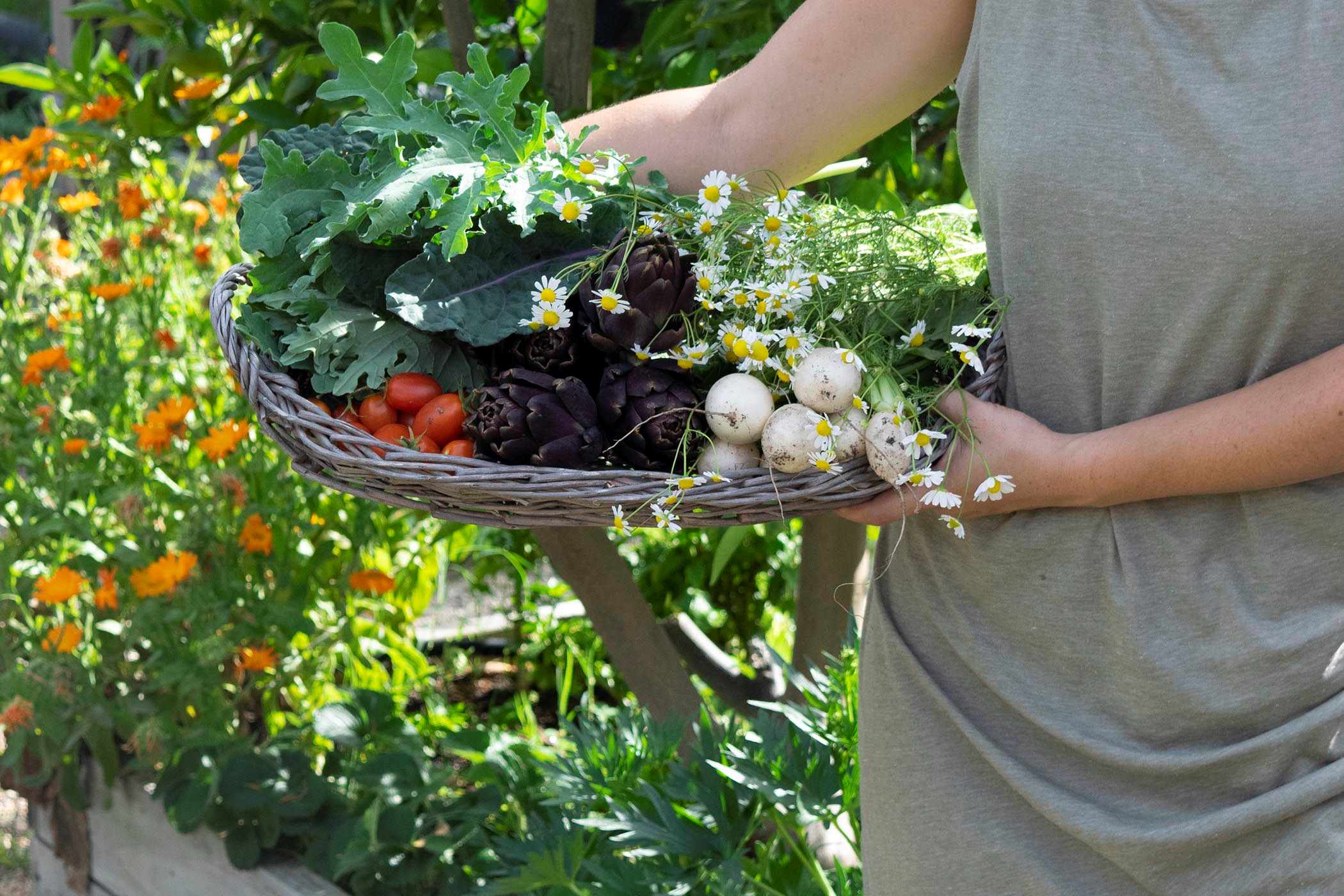

Ornamental Gardening
When To Harvest Herbs After Planting
Modified: January 22, 2024
Discover the perfect timing for harvesting herbs after planting with our comprehensive guide on ornamental gardening. Learn when to reap the flavorful rewards of your hard work.
(Many of the links in this article redirect to a specific reviewed product. Your purchase of these products through affiliate links helps to generate commission for Chicagolandgardening.com, at no extra cost. Learn more)
Table of Contents
Introduction
Welcome to the world of ornamental gardening, where you can transform your outdoor space into a vibrant and visually pleasing oasis. Whether you’re an experienced gardener or just starting out, knowing when to harvest your herbs is crucial for maximizing their flavor and potency.
When it comes to ornamental gardening, the timing of the herb harvest can be influenced by various factors such as the type of herb, its growth cycle, and the purpose for which you’re growing it. In this article, we will explore the different factors to consider when deciding the optimal time to harvest your herbs.
Gardening enthusiasts are often faced with the question of whether to grow annual or perennial herbs. Annual herbs complete their life cycle within a year, whereas perennial herbs have the ability to grow and thrive for multiple years. Understanding the characteristics of these two types of herbs is essential when determining the appropriate timing for harvesting.
Additionally, the time of day at which you harvest your herbs can greatly impact their quality and taste. Some plants have higher concentrations of essential oils and flavors in the morning, while others reach their peak in the afternoon. We will dive into the best time of day to harvest different herbs to ensure you’re maximizing their aromatic and flavorful qualities.
Identifying the signs that indicate your herbs are ready to be harvested is an essential skill that every ornamental gardener should develop. This includes observing the growth stage, appearance, and fragrance of the herbs. Knowing these signs will help you confidently determine when your herbs are at their prime.
Proper harvesting techniques are equally important to maintain the health and vitality of your herbs. From using the right tools to making clean cuts, we will guide you through the best practices to ensure a successful harvest.
Finally, once you’ve harvested your herbs, it’s important to store them properly to preserve their freshness and flavor for future use. We will provide tips on how to store freshly harvested herbs, including drying, freezing, and using preservation methods such as herb-infused oils or vinegars.
Now that we’ve covered the key points, let’s dive deeper into each factor to consider when it comes to harvesting your herbs in the world of ornamental gardening.
Factors to Consider
When it comes to harvesting your herbs, several factors should be taken into consideration. By understanding these factors, you can ensure that you are harvesting your herbs at the optimal time to maximize their flavor and potency.
The first factor to consider is the type of herb you are growing. Different herbs have different growth cycles and maturity periods. Annual herbs, such as basil and cilantro, typically complete their life cycle within a year. This means that they will grow, flower, and produce seeds all in one growing season. As a result, it is best to harvest annual herbs before they start flowering, as their flavors can become bitter or less potent once they enter the flowering stage.
On the other hand, perennial herbs, such as rosemary, thyme, and lavender, have the ability to grow and thrive for multiple years. These herbs often develop stronger flavors as they mature. For perennial herbs, it is important to wait until they have reached a certain size and maturity before harvesting. This will ensure that the herb has developed its full flavor profile.
In addition to the type of herb, you should also consider the purpose for which you are growing them. For culinary herbs, such as parsley and dill, harvesting them when the leaves are young and tender will result in the best flavor. However, if you are growing herbs for their medicinal properties, it is often recommended to wait until they are more mature, as their potency can increase with age.
The climate and weather conditions in your area can also impact the timing of herb harvest. In cooler or temperate regions, herbs may take longer to reach maturity, while in warmer climates they may grow more rapidly. Monitoring the growth of your herbs and observing their appearance can help you determine when they are ready to be harvested.
Another factor to consider is the growth stage of the herb. Herbs go through different growth stages, starting from seedling, vegetative growth, flowering, and finally seed production. The optimal time for harvesting varies depending on the growth stage. For example, if you are growing basil, it is best to harvest the leaves during the vegetative growth stage when they are full and lush. However, if you are planning to collect seeds for future planting, you will need to wait until the herb reaches the seed production stage.
Lastly, it is important to note that personal preference plays a role in determining when to harvest your herbs. Some individuals prefer a milder taste and opt to harvest their herbs earlier, while others enjoy a stronger flavor and choose to harvest them at a more mature stage.
By considering these factors, you can make informed decisions about when to harvest your herbs, ensuring that you capture their peak flavors and aromas.
Harvesting Annual Herbs
Annual herbs, such as basil, cilantro, and parsley, offer a burst of fresh and flavorful goodness in your ornamental garden. Harvesting these herbs at the right time is crucial to enjoy their aromatic qualities and enhance your culinary creations.
When it comes to annual herbs, it is important to harvest them before they start to flower. Once the herb starts flowering, it diverts its energy towards producing seeds, resulting in a decline in flavor and potency. To prevent this, regularly pinch off the flowering buds as soon as they appear to encourage the herb to continue producing foliage.
For basil, the ideal time to harvest is when the plant has developed a good number of leaves but before it starts to flower. Gently pluck the leaves from the stems using your fingers or a pair of clean scissors. Remember to start harvesting from the top of the plant, as new leaves will continue to grow from the base.
Cilantro leaves are best harvested when they are young and tender, just before the plant begins to bolt. Simply cut the outer leaves from the base of the plant, leaving the inner leaves to continue growing. You can harvest the entire plant if needed, but be sure to leave a few stems behind to encourage regrowth.
Parsley can be harvested once the leaves have reached a decent size. Similar to cilantro, you can begin harvesting by cutting the outer leaves from the base of the plant. The inner leaves will continue to develop, providing you with a continuous supply of fresh parsley throughout the growing season.
When harvesting annual herbs, always be mindful of not removing too many leaves at once, as this can weaken the plant and hinder its ability to regrow. Harvesting small amounts at regular intervals is a better approach to ensure a consistent supply of fresh herbs.
To enjoy these herbs at their freshest and most flavorful, it is recommended to use them immediately after harvest. If you have more than you can use at once, consider storing them in a small jar filled with water, like a bouquet of flowers, placed in the refrigerator. This will help keep the herbs hydrated and prolong their freshness.
Remember, the key to harvesting annual herbs is to do so before they start flowering, ensuring that you capture their vibrant flavors at their peak. Regular harvesting will not only enhance the taste of your culinary creations but also encourage healthy growth and continuous production throughout the growing season.
Harvesting Perennial Herbs
Perennial herbs, such as rosemary, thyme, and lavender, offer a reliable source of flavor and fragrance in every ornamental garden. These hardy herbs require a slightly different approach when it comes to harvesting, as they have the ability to produce foliage for multiple years.
Unlike annual herbs, perennial herbs often develop stronger flavors as they mature. It is recommended to wait until the plants have established themselves and reached a certain size before harvesting. This allows the herb to fully develop its flavor profile, ensuring the best culinary results.
For rosemary, you can start harvesting once the plant is at least six months old and has produced sturdy stems. When harvesting, it is best to cut off the top 2-3 inches of the stem, just above a leaf node. This encourages lateral growth and helps maintain the overall shape of the plant. Regular pruning of rosemary also promotes bushiness and prevents the plant from becoming leggy.
Thyme is another perennial herb that benefits from regular pruning. Once the plant has established itself, you can begin harvesting sprigs of thyme by cutting them from the stems. Be sure to leave at least 2 inches of growth on the plant to encourage regrowth. If you need a larger quantity of thyme, you can also harvest entire stems and strip the leaves for use.
Lavender, with its soothing aroma and beautiful flowers, is a delightful addition to any ornamental garden. The best time to harvest lavender is right before the flower buds open fully. Cut the stems just above the foliage, allowing you to enjoy both the vibrant flowers and the fragrant leaves. You can use the harvested lavender to make sachets, potpourri, or to infuse into oils and vinegars.
When harvesting perennial herbs, it is important to never remove more than about one-third of the plant’s foliage at a time. This ensures that the plant remains healthy and continues to produce new growth. Regular harvesting also prevents the plants from becoming woody and encourages a bushier habit.
To preserve the flavor and aroma of perennial herbs, it is best to use them fresh. However, if you have an abundance of herbs, you can dry them by hanging them upside down in a cool, well-ventilated area. Once dried, store the herbs in an airtight container away from direct sunlight to maintain their potency.
Harvesting perennial herbs requires patience and careful attention to the plant’s growth and development. By harvesting at the right time and following proper pruning techniques, you can enjoy the full range of flavors and fragrances that these enduring herbs offer.
Best Time of Day to Harvest Herbs
The time of day at which you harvest your herbs can greatly impact their flavor and aroma. Some herbs have higher concentrations of essential oils and flavors at specific times of the day. By understanding the best time to harvest different herbs, you can ensure that you’re maximizing their aromatic and flavorful qualities.
For herbs that are grown primarily for their leaves, such as basil, cilantro, and mint, it is generally recommended to harvest them in the morning. This is when the essential oils and flavors are at their highest concentration. Harvesting in the morning also helps ensure that the herbs stay fresh longer, as they have had the opportunity to hydrate overnight.
On the other hand, herbs that are grown for their flowers, such as chamomile and lavender, are best harvested in the afternoon. This is when the flowers have fully opened and will provide the strongest fragrance and flavor. Wait until the sun has dried off any morning dew from the flowers before harvesting to prevent any moisture-related issues during storage.
For herbs that are grown for their seeds, such as dill and coriander, it is recommended to harvest them in the late morning or early afternoon. This is when the plants have had a chance to dry off after the dew has evaporated. Harvesting the seeds at this time ensures that they are fully mature and have reached their maximum flavor potential.
It is important to note that the best time of day to harvest herbs can vary depending on your local climate and environmental conditions. If you live in a particularly hot or dry region, you may find that harvesting in the early morning or late evening, when temperatures are cooler, is more suitable.
Regardless of the specific time of day, there are a few general guidelines to follow when harvesting herbs. First, make sure that the plants are dry, as harvesting wet herbs can increase the risk of mold or decay during storage. Second, use clean and sharp tools, such as pruning shears or scissors, to make clean cuts without damaging the rest of the plant. Lastly, only harvest what you need at the moment to ensure the best flavor and freshness.
By harvesting your herbs at the optimal time of day, you can savor the full flavors and aromas that these plants have to offer. Experiment with different harvesting times and take note of how it impacts the taste and fragrance of your herbs. With a little observation and care, you’ll become an expert at harvesting herbs at their peak.
Signs of Ready-to-Harvest Herbs
Knowing the signs that indicate your herbs are ready to be harvested is essential for ornamental gardeners. By observing the growth stage, appearance, and fragrance of the herbs, you can confidently determine the optimal time to harvest and enjoy their fresh flavors and aromas.
One of the key signs of readiness for harvest is the growth stage of the herb. Different herbs have different growth patterns, and it’s important to familiarize yourself with these stages. For leafy herbs, such as basil and parsley, the leaves should be mature, full-sized, and lush. For herbs grown for their flowers, such as chamomile and lavender, the blooms should be fully open and vibrant in color.
Appearance also plays a crucial role in determining if an herb is ready for harvest. Look for signs of fresh and healthy foliage. The leaves should be vibrant in color, free from discoloration or wilting. In some cases, the texture of the leaves can also indicate readiness. For instance, cilantro leaves should be tender and pliable to the touch, while rosemary leaves should be firm and slightly resinous.
Fragrance is another important factor to consider. Many herbs are valued for their aromatic properties, and the potency of their scent can indicate their readiness for harvest. Gently rub or crush a leaf between your fingers and take note of the fragrance. For example, basil should have a strong and delightful aroma, while thyme should emit a pungent and herbal scent.
Additionally, paying attention to the herb’s growth pattern can provide clues for harvest readiness. If the herb has started flowering, it may be an indication that it is reaching the end of its peak flavor and potency. In this case, it’s best to harvest the herb before it shifts its energy towards seed production, as the flavor can become bitter or less intense.
While these signs are helpful indicators, it’s important to remember that personal preference and intended use also play a role in determining when to harvest your herbs. Some individuals may prefer a milder flavor and harvest their herbs earlier, while others may prefer a stronger taste and opt for a more mature stage of growth.
By observing the growth stage, appearance, and fragrance of your herbs, you can confidently determine the optimal time to harvest. Harvesting at the peak of readiness ensures that you capture the full flavor and aroma of your herbs, enhancing the enjoyment of your ornamental garden and culinary creations.
Proper Harvesting Techniques
Using proper harvesting techniques is essential to ensure the health and vitality of your herbs. By following these techniques, you can minimize damage to the plants and maximize the flavor and longevity of your harvested herbs.
First and foremost, it is important to use clean and sharp tools when harvesting herbs. Dull or dirty tools can cause unnecessary damage to the plant and increase the risk of disease or infection. Use pruning shears or sharp scissors to make clean cuts, avoiding tearing or bruising of the plant tissue.
When harvesting leafy herbs, such as basil or mint, start by selecting the outer leaves or branches first. Gently pinch or cut them off close to the stem. This encourages the plant to continue producing new growth from the center and promotes a bushier habit.
For herbs that have woody stems, like rosemary or thyme, it is best to cut the stems rather than plucking individual leaves. Position your pruning shears or scissors just above a leaf node and make a clean cut. This technique helps stimulate new growth and maintains the plant’s shape and structure.
When harvesting herbs that grow in clumps or bunches, such as chives or cilantro, you can use a “cut and come again” technique. Instead of harvesting individual leaves, snip around 1/3 to 1/2 of the plant’s height, leaving behind enough foliage for continued growth. This allows you to harvest multiple times throughout the season.
It’s important to avoid over-harvesting and depleting the herbs of their energy reserves. Removing more than one-third of the plant’s foliage at a time can stress the plant and hinder its ability to regrow. Regular and moderate harvesting, taking into account the growth rate of each herb, is crucial for maintaining overall plant health.
After harvesting, remember to handle the herbs gently to prevent bruising or damaging the leaves. Avoid washing the herbs unless necessary, as moisture can accelerate decay and reduce shelf life. If washing is required, do so with gentle care, and make sure to thoroughly dry the herbs before storage.
To preserve the flavor and quality of your harvested herbs, it is recommended to use them fresh whenever possible. If you have more herbs than you can use immediately, there are various preservation methods you can employ, such as drying, freezing, or using them to infuse oils or vinegars.
By employing proper harvesting techniques, you can delicately collect your herbs and extend their usability. Remember to be mindful of the plant’s growth patterns, use sharp tools, and handle the herbs with care. These practices will contribute to the overall well-being of your ornamental garden and ensure a bountiful and flavorful harvest.
Storing Freshly Harvested Herbs
Properly storing freshly harvested herbs is crucial to maintain their freshness, flavor, and longevity. Here are some tips and techniques to help you store your herbs effectively and enjoy their goodness for an extended period.
One of the simplest and most common methods to store herbs is by drying them. Air drying works well for herbs with low moisture content, such as rosemary, thyme, and oregano. Bundle a small bunch of herbs together and hang them upside down in a cool, well-ventilated area away from direct sunlight. This method allows the herbs to slowly dry out while retaining their aromatic oils. Once completely dried, you can crumble the leaves and store them in airtight containers, away from heat and moisture.
Freezing is another popular method to preserve the flavor and quality of freshly harvested herbs. Before freezing, it is recommended to blanch the herbs for a few seconds and then plunge them into ice water. This process helps preserve the color and flavor of the herbs. Pat dry the herbs and remove any excess moisture. Then transfer them into freezer-safe containers or sealed plastic bags. Label and date the containers before placing them in the freezer. Frozen herbs can be used directly in cooking or added to sauces, soups, and stews.
Another technique to store herbs is by preserving them in oil or vinegar. Herbs, such as basil or thyme, can be finely chopped and infused in olive oil or white vinegar. This process not only preserves the freshness of the herbs but also infuses the oil or vinegar with their flavors. Fill sterilized bottles or jars with the herb-infused oil or vinegar, making sure the herbs are fully submerged. Store the containers in a cool, dark place to maintain the quality and prevent spoilage. Herb-infused oils and vinegars make great additions to dressings, marinades, and sauces.
If you prefer to store your herbs in their fresh form, there are a few techniques to keep them vibrant and flavorful. One method is to trim the herb stems and place them in a jar filled with water, similar to a bouquet of flowers. Cover the herbs loosely with a plastic bag and store them in the refrigerator. This method helps prolong the freshness of the herbs for a few days. Another option is to wrap the herbs in a slightly damp paper towel and place them in a perforated plastic bag in the vegetable crisper of the refrigerator.
Regardless of the storage method you choose, it’s important to label and date the containers or bags to keep track of the herb variety and storage duration. Additionally, always make sure the herbs are clean and free from any dirt or debris before storing.
Remember that different herbs have different storage requirements, so it’s essential to research and understand the best storage method for each herb you are harvesting. By employing proper storage techniques, you can enjoy the flavors and aromas of your freshly harvested herbs throughout the year.
Conclusion
In the world of ornamental gardening, knowing when and how to harvest herbs is a skill that can elevate your gardening experience and culinary creations. By considering various factors such as the type of herb, growth cycles, and intended use, you can determine the optimal time to harvest your herbs and capture their peak flavors and potency.
For annual herbs like basil, cilantro, and parsley, it is important to harvest them before they start flowering to ensure the best taste. Regularly pinching off the flowering buds encourages continuous leaf production and prevents bitterness. Perennial herbs, on the other hand, benefit from waiting until they have reached a certain size and maturity before harvesting. This allows them to develop their full flavor profiles.
Understanding the best time of day to harvest herbs can further enhance their flavors. Harvest leafy herbs in the morning when their essential oils and flavors are at their highest concentration. For herbs grown for their flowers, harvest in the afternoon once the blooms have fully opened. Additionally, paying attention to the signs of readiness, such as growth stage, appearance, and fragrance, can help you harvest your herbs at their peak.
Proper harvesting techniques, such as using clean and sharp tools, making clean cuts, and avoiding over-harvesting, ensure the health and vitality of your herbs. After harvest, it is important to store your herbs properly to maintain their freshness and flavor. Whether through drying, freezing, or storing in oil or vinegar, each method offers a unique way to preserve your herbs for future use.
In conclusion, by following these guidelines and techniques for harvesting and storing your herbs, you can fully enjoy the beauty and flavors of your ornamental garden. Experiment with different herbs and observe their growth patterns to develop your own harvesting routine. Taking the time to harvest your herbs at their peak ensures a rewarding and flavorful journey in the world of ornamental gardening.
